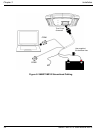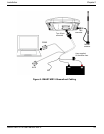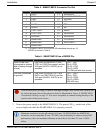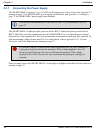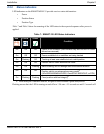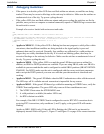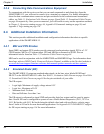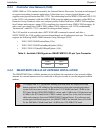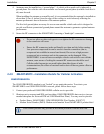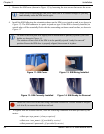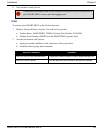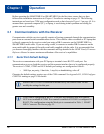
40 SMART-MR10/15 User Manual Rev 5
Chapter 2 Installation
2.3.4 Connecting Data Communications Equipment
To communicate with the receiver so that you can send commands to and obtain logs from the
SMART-MR10/15, you will need to connect it to a terminal or computer. For further information
about the data communications connector and pin-out details for the evaluation and streamlined
cables, see Table 11, Evaluation Cable Pinouts on page 84 and Table 12, Streamlined Cable Pinouts
on page 86 respectively. Once you are connected, you will be able to carry out the operations outlined
in Chapter 3, Operation starting on page 46, Appendix B Commands starting on page 88, and
Appendix C Logs starting on page 110.
2.4 Additional Installation Information
This section provides additional installation and configuration information that relate to specific
applications of the SMART-MR10/15.
2.4.1 MKI and PPS Strobes
Input (MKI) and output (PPS) strobes provide status and synchronization signals. PPS is a 3.3V
CMOS output; MKI is a 5V-tolerant input. PPS and MKI are referenced to SGND. Pin-out
information can be found on Table 11, Evaluation Cable Pinouts on page 84.
MKI can be used in conjunction with the MARKTIME and MARKPOS logs. For information about
these logs, refer to OEMV Family Firmware Reference Manual, available on the NovAtel website at
www.novatel.com/support/firmware-software-and-manuals/product-manuals-and-doc-updates/
.
2.4.2 Emulated Radar (ER)
The SMART-MR10/15 output an emulated radar signal via the bare wires labeled SGND and
ER OUT on the SMART-MR10/15 cable. See Table 11, Evaluation Cable Pinouts on page 84 or Table
12, Streamlined Cable Pinouts on page 86 for the pin-out details of your cable.
The ER outputs:
• Logic high: Minimum of supply voltage minus 0.5V
• Logic low: Maximum of 0.5V
• Minimum load: 3k ohms
• Rise and fall time: Less than 1 ms.
The ER output is referenced to signal GND and provides logic low output until its speed is greater
than 1 km/hr. ER can be configured to operate at one of three distinct frequencies (26.11, 28.12 or
36.11 Hz/km/hr, with 36.11 Hz/km/hr being the default value) and with an effective velocity range
from 1 km/hr to 55 km/hr for near-horizontal applications. See Appendix B.12 RADARCFG Configure
the ER output starting on page 104 for more information.



